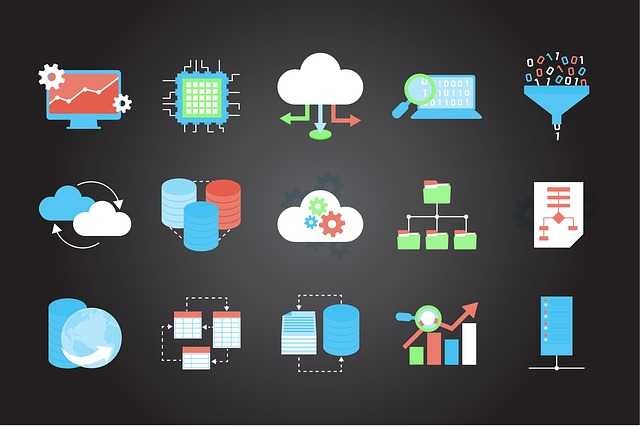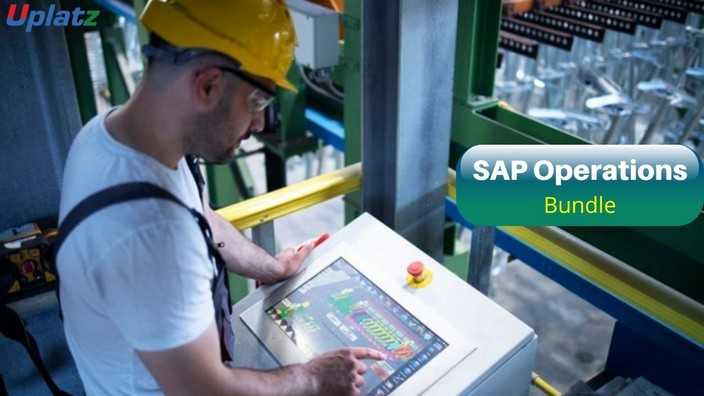SAP PI / PO
Learn SAP PI/PO architecture, process integration, components, and monitoring techniques. Become an SAP Process Integration/Orchestration Consultant.Preview SAP PI / PO course
View Course Curriculum Price Match Guarantee Full Lifetime Access Access on any Device Technical Support Secure Checkout Course Completion Certificate 41% Started a new career
BUY THIS COURSE (
41% Started a new career
BUY THIS COURSE (GBP 12 GBP 29 )-
 64% Got a pay increase and promotion
64% Got a pay increase and promotion
Students also bought -
-

- SAP PO (Process Orchestration)
- 16 Hours
- GBP 12
- 367 Learners
-

- Bundle Course - SAP Operations Management
- 250 Hours
- GBP 22
- 4737 Learners
-

- Career Path - SAP Functional Consultant
- 500 Hours
- GBP 99
- 7893 Learners

SAP PI/PO (Process Integration/Process Orchestration) is a technical module/tool that allows you to combine solutions. It makes it easy to coordinate data between different systems. PI enables the user to perform integrations easily, with a regular tool that allows you to maintain all the different links in one place.
PI helps to synchronize data to a warehouse system, where you can send all the information regarding orders, which of them are being generated, how they are used, and when they should be shipped. With one PI tool work becomes easier and more hassle-free for developers and organizations that can be used for a variety of diverse integrations, as opposed to numerous different tools being used for lesser tasks.
SAP Process Orchestration is a tool to mechanize and optimize business processes. It combines features of SAP Business Process Management (BPM), SAP Process Integration(PI) and SAP Business Rules Management (BRM). It is more advanced version of SAP PI and has all the tools required to integrate applications. SAP PI (PO) is the component (middleware) of SAP Netweaver group of products that facilitates system integration between SAP and other external systems.
With new PO version SAP has added fully functional Netweaver Business Process Management (NW BPM) and Business Rule Management (BRM) which were fully executable on Java. Therefore, Process Orchestration (PO) is a combination of Process Integration (PI) with AEX, Business Process Management (BPM) and Business Rule Management (BRM) which only runs on Java. It is a middleware platform that doesn’t deal with how application components are implemented with business logic and focus more on data exchangebetween the different components. You can consider SAP PI/PO as a central instance or middleware that interconnects different systems.
In summary, SAP Process Integration/Orchestration provides an organization's integration platform which integrates between SAP and non-SAP applications outside the organization between business to business and within the organization between applications to application.it was called software exchange infrastructure. It s compatible with software products of other organizations, it acts as central between entities with varying requirements with respect to connectivity, protocols, and format, so it's also called as an integration broker.
Benefits of SAP PO include:
a) Simple and fast data exchange between different systems
b) Realization of system-across processes
c) Comprehensive transparency of the connection
d) Efficient data transfer
Uplatz provides this detailed course on SAP PI/PO module. At the end of the SAP PI/PO course, you will receive a Course Completion Certificate issued by Uplatz. In this SAP PI/PO course you'll gain expertise on all SAP PI/PO components, knowledge regarding the development of interfaces, mapping, understanding how the queues work, configuration – how to set up an adapter’s file and SOAP adapters, operational aspects, an introduction to BPMN.
In this SAP PI/PO course, you will learn about Connection between the SAP system and external systems, Trouble-free data exchange, Usage of standard connections like RFC & IDOC, Implementation & Configuration of SAP PI / SAP PO, Connection of all applications and processes over an interface bus, Connection of different partners with specific certificates, and more.
Course/Topic 1 - Course access through Google Drive
-
Google Drive
-
Google Drive
• Understand Concepts like XML, HTTP, Webservice, SOA and many others
• Understand the SAP PO Architecture and Tools external parties.
• It is a middleware platform that doesn’t deal with how application components are implemented with business logic and focus more on data exchangebetween the different components.
• You can consider SAP PI/PO as a central instance or middleware that interconnects different systems.
• Learn all the PO tool in detail
• Understand Concepts like XML, HTTP, Webservice, SOA and many others
• Understand the SAP PO Architecture and Tools
• Learn the testing tools like SOAPUI and PIMON
SAP PI/PO – COURSE SYLLABUS
I. INTRODUCTION TO SAP NETWEAVER TECHNOLOGY
Building Blocks of SAP Netweaver
Web AS Architecture.
II.INTRODUCTION TO SAP PI /PO 7.5
III. SYSTEM LANDSCAPE DIRECTORY(SLD)
IV.ENTERPRISE SERVICE REPOSITORY (ESR)
V.MAPPINGS
VI. INTEGRATION DIRECTORY(ID)
VII. RUNTIME
VIII. INTEGRATION PROCESS (CCBPM)
IX.NETWEAVER BPM
X.PROXIES
PI.SCENARIOS
The SAP PI/PO Certification ensures you know planning, production and measurement techniques needed to stand out from the competition.
SAP Process Orchestration (PO) is an application integration middleware software developed by SAP. SAP PI is a component of SAP PO, and also of the SAP Netweaver platform that allows integration between SAP and legacy applications or other external systems.
The SAP PI/PO Developer (Process Integration / Process Orchestration) is responsible for delivering interfaces between SAP and Non-SAP systems that combine business processes with software SAP development tools.
Cloud Platform Integration (CPI) is SAP's cloud-based middleware that allows integration between cloud and on-premise applications with third-party SAP and non-SAP products.
Uplatz online training guarantees the participants to successfully go through the SAP PI/PO Certification provided by Uplatz. Uplatz provides appropriate teaching and expertise training to equip the participants for implementing the learnt concepts in an organization.
Course Completion Certificate will be awarded by Uplatz upon successful completion of the SAP PI/PO online course.
The SAP PI/PO draws an average salary of $101,000 per year depending on their knowledge and hands-on experience.
The SAP PI/PO Developer (Process Integration / Process Orchestration) is responsible for delivering interfaces between SAP and Non-SAP systems that combine business processes with software SAP development tools.
SAP Process Integration (PI) and the latest versions known as SAP Process Orchestration (PO) are the application integration middleware provided by SAP. SAP PI (PO) is the component (middleware) of SAP Netweaver group of products that facilitates system integration between SAP and other external systems.
Note that salaries are generally higher at large companies rather than small ones. Your salary will also differ based on the market you work in.
SAP PI/PO /embedded PI/PO.
SAP PI/PO Consultant.
PI/PO Associate Consultant.
Q1. What are the activities for SAP NetWeaver XI integration, implementation, post-go-live?
SAP NetWeaver XI integration where the Involvement of charing the information between SAP and Non SAP System comes into Picture. Implementation where the SAP involvement in the business coming into the Picture.
Go Alive After Developing the interface after coming across various stages like testing the Interface is made alive or used to the real-time scenario is said to be GO ALIVE.
Q2. What is the CCMS button in RWB?
It is an alert or monitoring for the error messages. To monitor SAP components. CCMS is SAP Computing Center Management System. RWB is smoothly integrated with CCMS and CCMS alerts can be viewed thro’ the Runtime WorkBench. It provides alert monitoring for SAP Exchange Infrastructure Which is used for monitoring any system errors and administration errors. Enables monitor entire system centrally.
Q3. What systems are used in your XI/PI Implementation?
Usually, we will use Development System, Testing System(QA), Production System. But sometimes we will use Pre-Prod (Pre Production System) also. Before you moving all interfaces to Production will use Pre-Prod to test all interfaces with huge volumes. So totally will use the following systems for implementation:
DEV
QA
Pre-Prod
Prod
Q4. Daily Activities and responsibilities of XI Developer?
Monitoring after golive troubleshoots performance issues when a ticket arises. on the development part, it will be creating BS, objects in IR, configuring in ID
Based on the scenario that what you are working in the low level Working on SLD, IR,ID, RWB + developing the scenario’s+Documentation + Based on the requirements design + monitoring check + Performance+..etc
Q5. Where would you look to find the Logical System in the SLD.?
In Business system wizard
Q6. What 2 Data Types are automatically created when the Namespace is saved in the Integration Repository?
ExchangeFaultdata and Exchange log data.
Q7. Which Development Object in SAP XI forms the “ROOT NODE” of an XML document when an XI message is generated?
MESSAGE TYPE
Q8. What is the relationship between Product, Product Version, Software Component, and Software Component Version? Give an example.
PRODUCT: Represents a collection of all versions of a product. In the SAP environment, a product corresponds to an SAP technical Component, e.g. 4.6c, 4.6d, and 4.7 COMPONENT: Represents a collection of all versions of software components Examples of Software components are SAP_APPL, SAP_ABA, SAP_HR Software.
Q9. JMS adapter can talk with what type of systems? Give some examples…
Messaging systems to the integration engine
Q10. What format can the JDBC adapter communicate in? Should you use native SQL?
JDBC adapter converts database content to XML messages and the other way around.
Q11. If communications with JDBC using XML format, what are 4 actions you could do?
SELECT, INSERT, DELETE, UPDATE.
Q12. Can JDBC adapter query DB tables? Can it insert?
Yes
Q13. Can an RFC adapter be used for asynchronous processing?
YES, the RFC adapter can be used for asynchronous processing.
Q14. Is it necessary to create the partner profiles in case of a file to idoc scenario?
NO, it is not always necessary to create the partner profiles in case of the file to idoc scenario if you are doing it for testing purposes otherwise you have to configure partner profiles to assure XI for receiver client.
Q15. What is the difference between the party and the business service and in which cases they are used with details?
A Communication party represents a layer unit that is involved in a cross-system process (eg. a company). and Business service represents an abstract, addressable unit. business services are used in the cross-company process. for eg if the parties involved have only published their interfaces and not their system landscape or it is partly known. normally we use business services to communicate with different systems in the same company.









